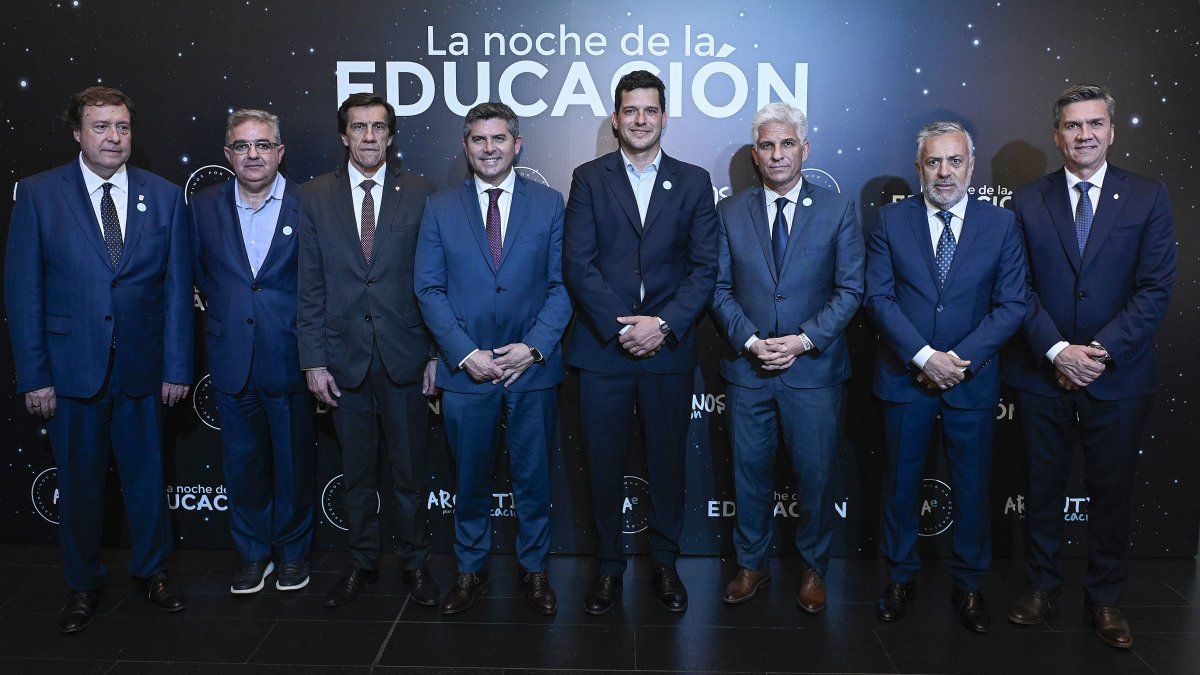The Secretary of Education of the Nation, governors and representatives from different areas were present at the meeting of the Agreement for Education. The objective is to improve the quality of education.
He Agreement for Education was presented this Tuesday at the former CCK, on the eve of the Teachers’ DayThe meeting, which brought together officials, leaders and academic representatives, focused on the announcement of 10 points of consensus that prioritize the national educational agenda. In this way, the Nation and the provinces signed the commitment to public policies in the matter, which had already been signed by the then presidential candidate. Javier Milei in 2023.
The content you want to access is exclusive for subscribers.
In the evening of the Night of Education The Secretary of Education of the Nation was present Carlos Torrendell. Several governors also participated along with him, such as Alfredo Cornejo (Mendoza), Raul Jalil (Catamarca), Leandro Zdero (Chaco), Ignacio Torres (Chubut), Claudio Poggi (Saint Louis) and Alberto Weretilneck (Río Negro). They were joined by education ministers and provincial officials.


Agreement for Education: Nation and the provinces signed a commitment for literacy
He Agreement for Education It consists of a consensus public policy agenda that set out 10 educational priorities. The document emerged from a consultation process through interviews and roundtables generated by the Observatory of Argentines for Education (AE), which drove this commitment from the very beginning, generating spaces for debate and discussion among the academic sector, social, union, political, religious and business leaders.
The challenges that make up the agreement are divided into three key dimensions, which articulate the ten priority axes of public policy proposals for Argentine compulsory education, that is, in the field of basic, primary and secondary education.
Governors’ Education Night 2.jpg

Group photo at the closing of the Education Night event.
Agreement on Education: the governors’ view
Among the guests was the Secretary of Education of the Nation, Carlos Torrendell. “Argentinos por la Educación expresses, like few others, the importance of this ‘educating society’. When President Javier Milei and the Minister of Human Capital, Sandra Pettovello, took office, literacy was a priority and Argentinos por la Educación played a key role in this process,” he stressed.
“Also the provinces that unanimously signed the Federal Consensus for Literacy. Our commitment to make fundamental changes, such as those permanently proposed by Argentinos por la Educación, are consolidated with concrete actions: the Executive Branch is ready to send to Congress a bill to strengthen the evaluation and educational information of students, teachers, schools and the system as a whole” he expressed Torrendell in his speech.
Several of the governors who signed the Education Agreement were present at the event. “The truth is that one is convinced that education is the mother of public policies. We are the governors and we are in charge of the initial, primary, secondary and tertiary levels. It is the provinces’ responsibility to take charge of education,” said the governor of San Luis, Claudio Poggi.
The Governor of Mendoza Alfredo Cornejo He said that “this document reflects the problems facing education globally and provides a path to resolve them.” “It is not an easy task to be undertaken overnight, and it is not the responsibility of a single government, but rather it is a commitment that is assumed by a large number of social actors,” he added.
The 10 priorities to overcome the education crisis
In this process, three key dimensions were identified that articulate 10 priority axes of public policy proposals for Argentine compulsory education.
The first axis focuses on the emergencies of each educational level. It is proposed there:
- Expanding coverage of the initial level
- Prioritize initial literacy at the primary level
- Supporting secondary school careers and achieving quality completion
The second axis refers to system-wide managementwhere it is proposed:
- Strengthening education governance
- Achieving sufficient and quality investment
- Producing more and better educational information and assessment
- Boosting teachers’ training, careers and salaries
On the third axis, focused on the transformation of schoolsit is proposed:
- Strengthen the times, spaces and conditions for learning
- Improving school management
- Prioritize socially relevant curricular content
Source: Ambito
I am an author and journalist who has worked in the entertainment industry for over a decade. I currently work as a news editor at a major news website, and my focus is on covering the latest trends in entertainment. I also write occasional pieces for other outlets, and have authored two books about the entertainment industry.




